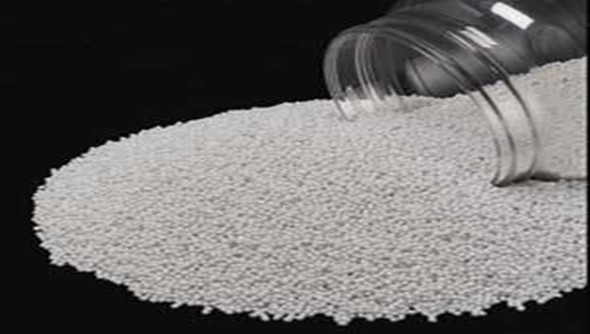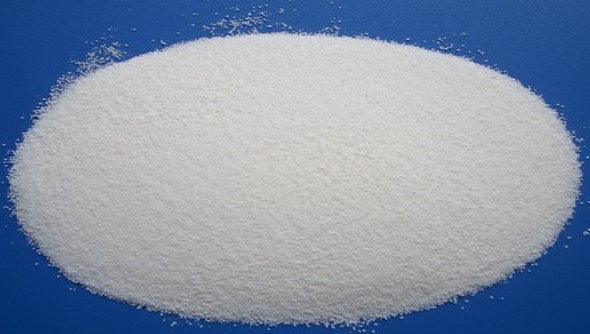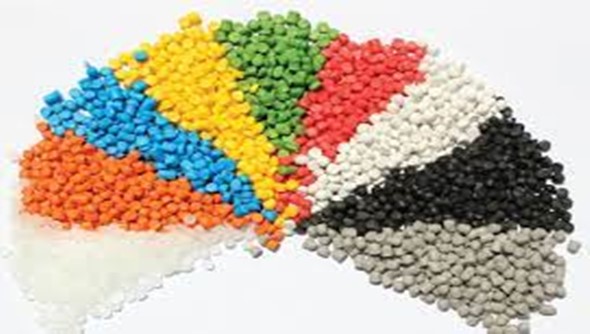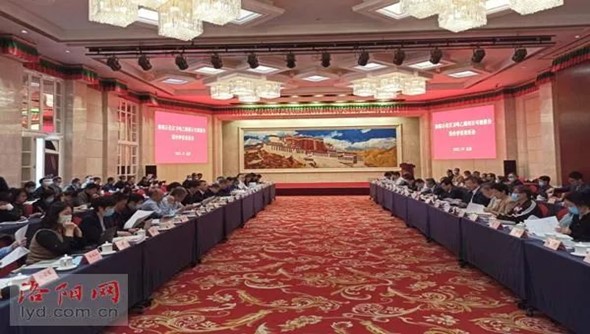-
 What are PVC granules ?11 23,2022
What are PVC granules ?11 23,2022PVC is one of the most used plastics in the industry sector. Plasticol, an Italian company located near Varese has been manufacturing PVC granules for more than 50 years now and the experience accumulated over the years allowed the business to gain such a deep level of know-how that we can now use it to satisfy all the clients’ requests offering innovative and reliable products. The fact that PVC is widely used for the production of many different objects shows how its intrinsic characteristics are extremely useful and special. Let’s start talking about the rigidity of PVC: the material is very stiff if pure but it becomes flexible if mixed with other substances. This distinctive trait makes PVC suitable for the manufacturing of products used in different fields, from the building one to the automotive one. However, not each peculiarity of the substance is convenient. The melting temperature of this polymer is pretty low, which makes PVC unsuitable for those environments where extremely high temperatures can be reached. Moreover, hazards can originate from the fact that, if overheating, PVC releases molecules of chlorine as hydrochloric acid or dioxin. Coming into contact with this substance could cause irreparable health issues. To make the polymer compatible with its industrial production, it is mixed with stabilisers, plasticisers, colorants, and lubricants which help in the manufacturing process as well as in making PVC more pliable and less prone to wear and tear. Based on its characteristics and its dangerousness, PVC granules have to be produced in specialized plants. Plasticol has a production line solely dedicated to this plastic material. The first stage of the manufacturing of PVC granules consists of the creation of long tubes of material made through a special extrusion plant. The next step consists of cutting the plastic in really small beads. The process is actually really simple, but it is extremely important to use caution when handling the material, taking fundamental precautions that may make it more complicated.
-
 What is Polyvinyl chloride (PVC) paste Resin ?11 18,2022
What is Polyvinyl chloride (PVC) paste Resin ?11 18,2022Polyvinyl chloride (PVC) paste Resin , as the name implies, is that this resin is mainly used in paste form. People often use this type of paste as plastisol, which is a unique liquid form of PVC plastic in its unprocessed state. . Paste resins are often prepared by emulsion and micro-suspension methods. Polyvinyl chloride paste resin has a fine particle size, and its texture is like talc, with immobility. The polyvinyl chloride paste resin is mixed with a Plasticizer and then stirred to form a stable suspension, which is then made into PVC paste, or PVC plastisol, PVC sol, and it is in this form that people are used to process the final Products. In the process of making paste, various fillers, diluents, heat stabilizers, foaming agents and light stabilizers are added according to the needs of different products. The development of the PVC paste resin industry provides a new type of liquid material that becomes a polyvinyl chloride product only by heating. This kind of liquid material is easy to configure, stable in performance, easy to control, easy to use, excellent in product performance, good in chemical stability, has a certain mechanical strength, easy to color, etc., so it is widely used in artificial leather, vinyl toys, soft trademarks, Production of wallpapers, paints and coatings, foamed plastics, etc. Property: PVC paste resin (PVC) is a large category of polyvinyl chloride resins. Compared with suspension resins, it is a highly dispersible powder. The particle size range is generally 0.1~2.0μm (the particle size distribution of suspension resins is generally 20~200μm. ). PVC paste resin was researched at the IG Farben factory in Germany in 1931, and industrial production was realized in 1937. In the past half-century, the global paste Pvc Resin industry has developed rapidly. Especially in the past ten years, production capacity and output have shown a leaping growth, especially in Asia. In 2008, the global total production capacity of paste PVC resin was approximately 3.742 million tons per year, and the total production capacity in Asia was approximately 918,000 tons, accounting for 24.5% of the total production capacity. China is the fastest growing region in the paste PVC resin industry, with production capacity accounting for approximately 13.4% of the total global production capacity and approximately 57.6% of the total production capacity in Asia. It is the largest producer in Asia. In 2008, the global output of paste PVC resin was about 3.09 million tons, and China’s output was 380,000 tons, accounting for approximately 12.3% of the world’s total output. Production capacity and output rank third in the world.
-
 what is PVC compound ?11 11,2022
what is PVC compound ?11 11,2022PVC compounds are based on the combination of the PVC polymer RESIN and additives that give the formulation necessary for the end-usage (Pipes or Rigid Profiles or Flexible Profiles or Sheets). The compound is formed by intimately mixing together the ingredients, which is subsequently converted into the “gelled” article under the influence of heat and shear force. Depending on the type of PVC and additives, the compound prior to gelation can be a free-flowing powder (known as a dry blend) or a liquid in the form of a paste or solution. PVC compounds when formulated, using plasticizers, into flexible materials, usually called PVC-P. PVC Compounds when formulated without plasticizer for rigid applications are designated PVC-U. PVC Compounding can be summed up as follows: The rigid PVC dry blend powder (called the Resin), which also contains other materials like stabilizers, additives, fillers, reinforcements, and flame retardants, must be intensively mixed in the compounding machinery. The dispersive and distributive mixing is critical, and all in compliance with well defined temperature limits. According to the formulation, the PVC resin, plasticizer, Filler, stabilizer and other auxiliaries are put into hot mixer mixing. After 6-10 mins discharge into the cold mixer (6-10 mins) for premixing. PVC compound must use the cold mixer to prevent material stick together after the hot mixer. The mixture material after plasticizing, mixing and dispersing evenly at around 155°C-165°C is then fed to the Cold mixture. The melting PVC compounding is then pelletised. After pelletizing, the granules temperature can be dropped to 35°C-40°C. Then after the wind-cooled vibrating sieve, the particle temperature drops below room temperature to be sent to the final product silo for packaging.
-
 Luoyang million tons of ethylene project made new progress !11 03,2022
Luoyang million tons of ethylene project made new progress !11 03,2022On October 19, the reporter learned from Luoyang Petrochemical that Sinopec Group Corporation held a meeting in Beijing recently, inviting experts from more than 10 units including China Chemical Society, China Synthetic Rubber Industry Association, and relevant representatives to form an evaluation expert group to evaluate millions of Luoyang Petrochemical. The feasibility study report of the 1-ton ethylene project will be comprehensively evaluated and demonstrated. At the meeting, the evaluation expert group listened to the relevant reports of Luoyang Petrochemical, Sinopec Engineering Construction Company and Luoyang Engineering Company on the project, and focused on a comprehensive evaluation of the necessity of project construction, raw materials, product plans, markets, and process technologies. form an opinion. After the meeting, relevant units will revise and improve the feasibility study report according to the opinions of the expert group, and finally form and issue an evaluation report, and promote the project to enter the feasibility study report approval process. Luoyang Petrochemical's million-ton ethylene project completed the feasibility study report in May this year and submitted it to the headquarters for review, and started the feasibility study report demonstration work in mid-June. After the completion of the project, it will accelerate the transformation and development of Luoyang Petrochemical and enhance the ability of enterprises to resist risks, thereby driving the transformation and upgrading of the petrochemical industry in the province and promoting the high-quality development of the manufacturing industry in the central region. The report of the city's 12th Party Congress pointed out that industrial co-construction is an important starting point for promoting the high-quality development of the manufacturing industry. Focusing on the theme of building a close cooperation industrial circle, Luoyang City will speed up the construction of the high-end petrochemical industry belt in Luojijiao, actively carry out the preliminary work of Luoyang Petrochemical's million tons of ethylene, and strive to promote the completion and commissioning of major projects such as one million tons of ethylene by 2025. According to public information, the ethylene project is located in the Petrochemical Park of the Advanced Manufacturing Development Zone, Mengjin District, Luoyang City. Mainly build 13 sets of process units including 1 million tons/year steam cracking unit, including 1 million tons/year steam cracking unit and subsequent high-performance metallocene polyethylene m-LLDPE, full density polyethylene, high-performance multimodal high density Polyethylene, high performance copolymerized polypropylene, high impact polypropylene, ethylene-vinyl acetate polymer EVA, ethylene oxide, acrylonitrile, acrylonitrile-butadiene-styrene ABS, hydrogenated styrene-butadiene inlay Segment copolymer SEBS and other devices and supporting public works. The total investment of the project is 26.02 billion yuan. After it is completed and put into operation, it is estimated that the annual operating income will be 20 billion yuan, and the tax revenue will be 1.8 billion yuan. As early as December 27 last year, the Luoyang Municipal Bureau of Natural Resources and Planning of Luoyang City explained the land application for the ethylene project, which mentioned that the project has been submitted for approval of 803.6 mu of construction land, and it is also planned to be submitted for approval in 2022. 822.6 mu of urban construction land was approved.




